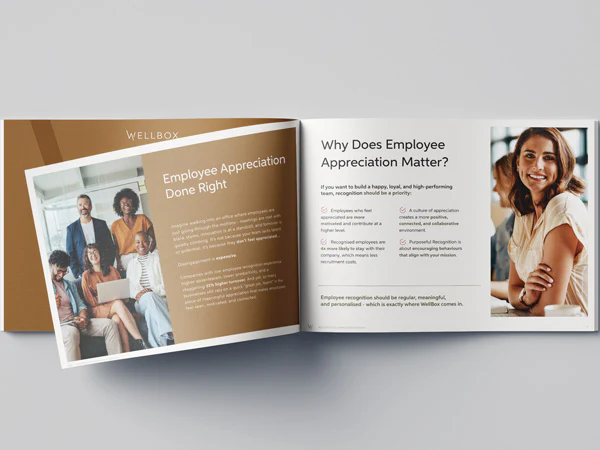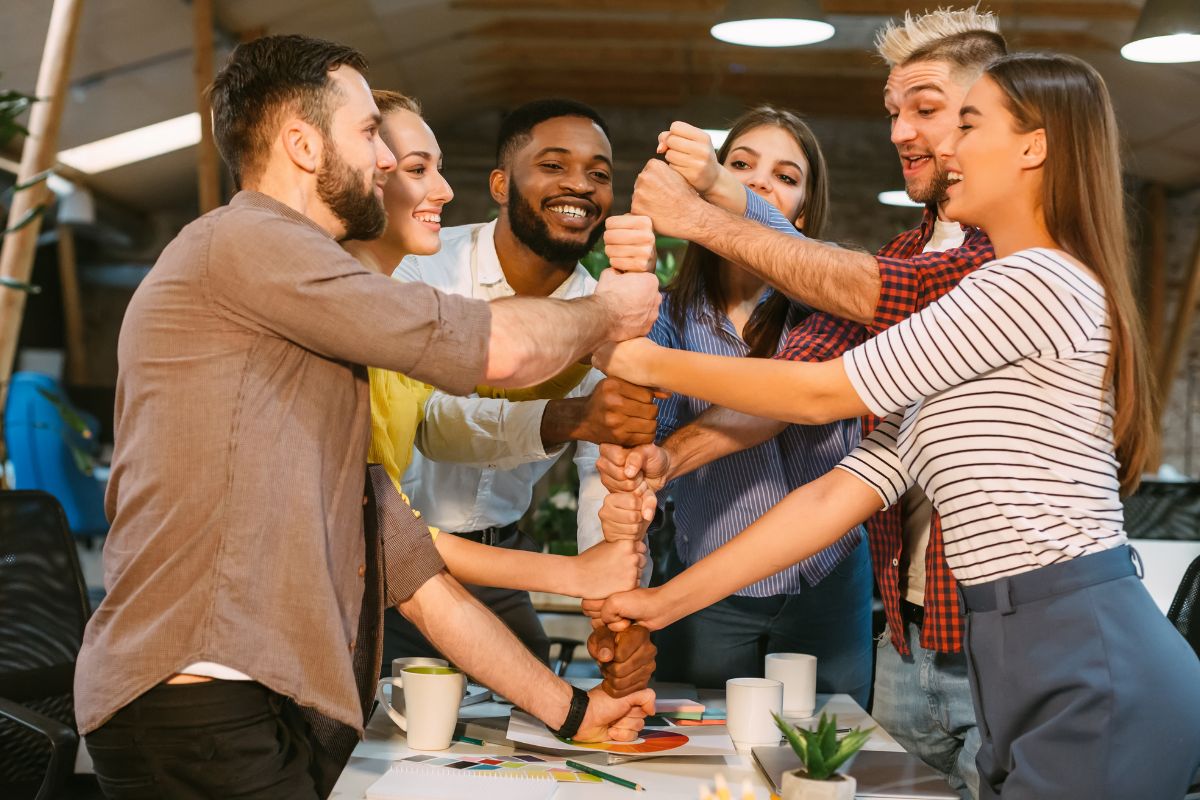Let’s be honest, when someone says “team building activities,” most people brace for awkward icebreakers, forced fun, or yet another Zoom quiz. It’s the kind of phrase that often sparks an eye-roll before anyone’s even explained what’s planned.
But team building isn’t the problem, bad team building is.
Done right, these moments are about culture. They’re about reinforcing connection, creating space for collaboration, and showing your team they’re seen, valued, and part of something meaningful.
In this blog, we’re rethinking what team building really means, beyond the buzzwords and stale formats. We’ll explore how the best teams are using well-designed activities to boost engagement, improve communication, and build genuine, long-term trust.
At WellBox, we believe those moments deserve to be tangible too. That’s why we help companies create memorable, physical touchpoints that turn “another team session” into something people actually look forward to. Because connection isn’t digital or physical. It’s both!
🧠 Why Team Building Still Matters in Modern Work
In a time when Slack pings have replaced hallway chats and onboarding happens over Zoom, it’s tempting to think team building has lost its relevance. But the reality is the opposite, team building is more important now than ever.
Remote and hybrid work have brought flexibility, but they’ve also created distance. And not just physical distance, emotional and relational too. Without intentional touchpoints, it’s easy for teams to drift into silos, for new hires to feel like outsiders, and for culture to become a set of buzzwords rather than a lived experience.
That’s exactly where team building comes in. Not as a quick morale booster, but as a strategic tool to drive outcomes that matter, engagement, trust, collaboration, and retention.
Think of it this way: great work doesn’t happen in isolation. It happens in moments of trust, in shared challenges, in casual connections that spark creativity. Team building creates the conditions for those moments, whether it’s helping a new starter feel at home faster, breaking down barriers between departments, or reigniting connection in a team that’s been “camera-off” for weeks.
And the data backs it up. Studies show that employees who feel connected to their team are more engaged, more loyal, and significantly more productive. In fact, something as simple as knowing your colleague’s dog’s name or celebrating a project milestone together can have a measurable impact on team performance.
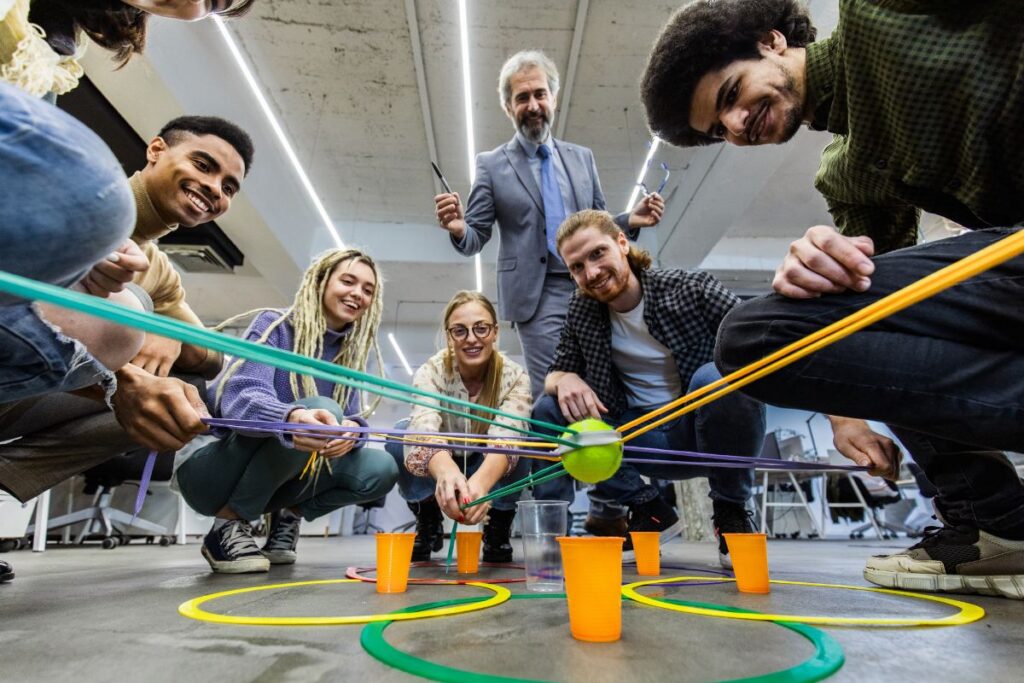
❌ Why Most Team Building Activities Miss the Mark
Let’s face it, a lot of team building out there just doesn’t work. And it’s not because people don’t want to connect, it’s because the format is broken.
Here’s where most team building goes wrong:
- It feels forced.
Nobody wants to be pulled into an awkward trust exercise or an icebreaker that makes them cringe. When activities feel inauthentic or performative, people switch off, emotionally and literally. - It’s one-size-fits-all.
What works for a sales team in London might totally flop for a creative team working remotely across three time zones. Without tailoring the experience to the people in the (virtual) room, team building feels generic, not genuinely inclusive. - It doesn’t align with actual goals.
Activities often focus on surface-level “fun” without considering what they’re supposed to achieve. Are you trying to improve communication? Build cross-functional collaboration? Celebrate a milestone? If there’s no clear intention, there’s no real impact. - It’s all talk, no takeaway.
The best team building gives people something to remember, an insight, a breakthrough, even just a good laugh. But too often, the experience fades by the next morning because there’s nothing anchoring it. - It forgets the digital reality.
In a world of remote and hybrid teams, many traditional team-building formats simply don’t translate. And virtual alternatives can feel half-baked when they’re not thoughtfully designed.
So what’s the solution?
It’s not about ditching team building altogether, it’s about rethinking how it’s done.
The best experiences are ones where:
- People feel safe to participate.
- The energy is matched to the team’s mood and culture.
- The format is designed with intention, not just copied from a template.
- There’s follow-through, something that makes the moment stick.
In the next section, we’ll explore what that actually looks like and how to build experiences that people don’t just tolerate, but genuinely value.
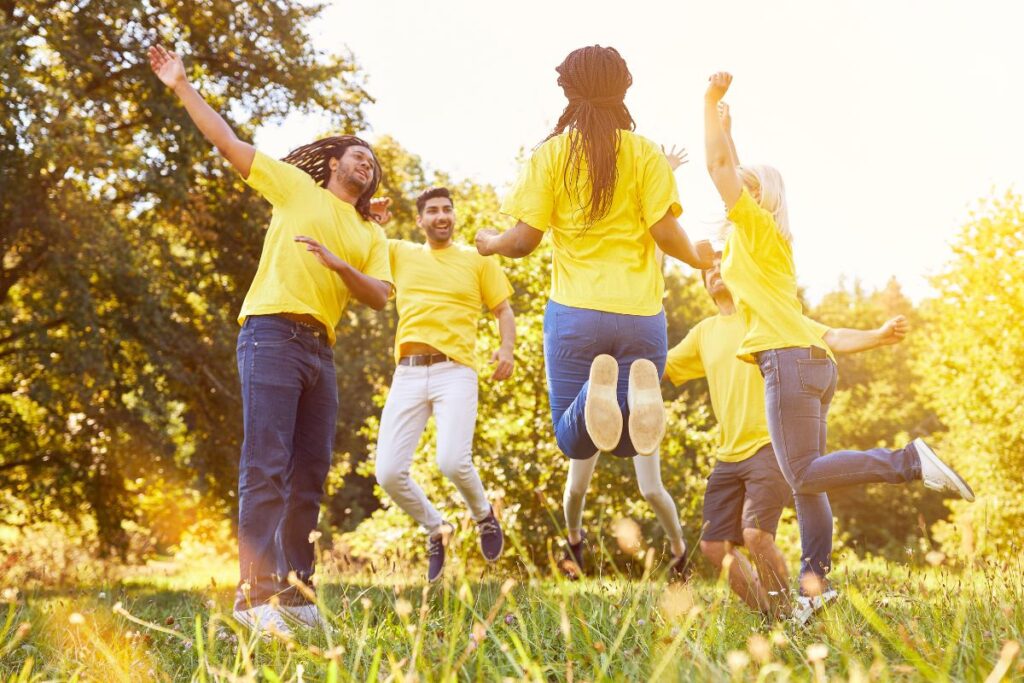
🎯 How to Design Team Building That Actually Works
So, if the problem isn’t team building itself, but how it’s done, what does great team building actually look like?
Spoiler: it’s not about extravagant budgets or elaborate games. It’s about intentional design, choosing the right experience, for the right people, with the right outcome in mind.
Here’s how to get it right:
1. Start with purpose, not just the activity.
Before picking an activity, ask:
👉 What are we trying to achieve?
- Is it about helping new hires feel part of the culture?
- Do you want to improve cross-team collaboration?
- Are you re-energising a team after a big project?
Every team building session should solve a real need, not just fill an hour.
2. Design for your people, not just your calendar.
Consider your team’s:
- Energy levels
- Work styles
- Personality types
- Accessibility needs
- Cultural or location differences
One team might thrive in a fast-paced competition; another might prefer something reflective and low-key. There’s no universal formula, good team building feels relevant and respectful.
3. Think beyond fun, aim for connection.
“Fun” is great, but only when it leads somewhere meaningful.
The best team activities create:
- Moments of shared challenge (hello, creative problem-solving)
- Opportunities for personal insight (getting to know the humans behind the job titles)
- Space for genuine interaction, not just task completion
Whether it’s a creative brainstorm, a shared storytelling game, or a strategy-based challenge, the point is to deepen relationships, not just entertain.
4. Mix up the formats.
Not all team building has to be loud, long, or even live. Consider building a rhythm with different types of experiences:
- 🔄 Collaborative → Group challenges, creative problem-solving
- 💬 Relational → Casual conversations, peer appreciation
- 🎨 Creative → Improv, pitch sessions, visual collaboration
- 🧘 Reflective → Team retrospectives, values-based prompts
This diversity helps include different personalities and keeps things from getting stale.
5. Make it stick.
The impact of a great session shouldn’t disappear when the call ends.
Add something that anchors the experience:
- A physical item (e.g. a journal, snack box, or shared keepsake)
- A follow-up conversation or reflection
- A shared ritual (e.g. team kudos at the end of the week)
These small touches turn a one-off session into something with lasting meaning and that’s where WellBox can really support, by turning moments into tangible memories.
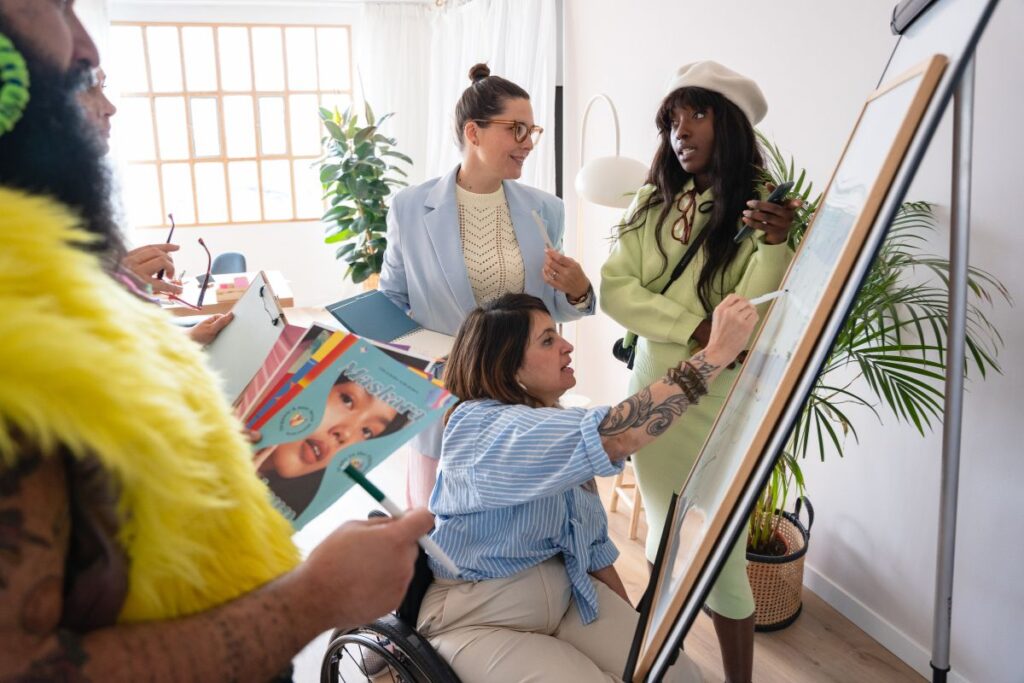
🧩 Where Team Building Delivers Real Value
When done well, team building becomes a strategic tool that supports people and culture throughout the entire employee lifecycle.
Here’s how smart companies are using it to drive real outcomes not just fill the social calendar.
🎁 1. Onboarding: Build Belonging from Day One
Starting a new job remotely or in a hybrid setup can be isolating. Great team building helps new hires:
- Feel welcomed by more than just HR
- Understand team dynamics faster
- Build early relationships that fuel collaboration
💡 A short bonding session paired with a WellBox welcome gift can transform day one into a moment of true connection.
🎯 2. Milestones: Celebrate Wins That Matter
Whether it’s hitting a target, launching a product, or just making it to the end of Q4, milestones are moments that deserve more than a “well done” in Slack.
Use team building to:
- Reflect on what was achieved together
- Share appreciation across the team
- Reconnect around what’s next
🔗 Pairing these moments with physical gifts (like snack boxes or custom celebration packs) helps mark the moment and makes it feel real, not just another item in a calendar invite.
🌍 3. Hybrid & Remote Culture: Replacing the Watercooler
In distributed teams, spontaneous connection doesn’t happen naturally. Team building can intentionally create:
- Casual spaces for real conversations
- New ways for departments to connect
- Rituals that make people feel part of something bigger
👥 Even simple, consistent formats, like monthly “virtual coffees” or shared creative challenges, go a long way in building team cohesion.
🔁 4. Retention & Loyalty: Make Work Feel Human Again
When people feel seen, supported, and connected, they stay.
Regular, thoughtful team building:
- Reinforces shared values
- Helps people feel recognised beyond their role
- Builds emotional investment in the team, not just the job
🧠 It’s not about grand gestures, it’s about consistent, intentional ones. And when combined with WellBox gifting, those moments have even more weight and meaning.
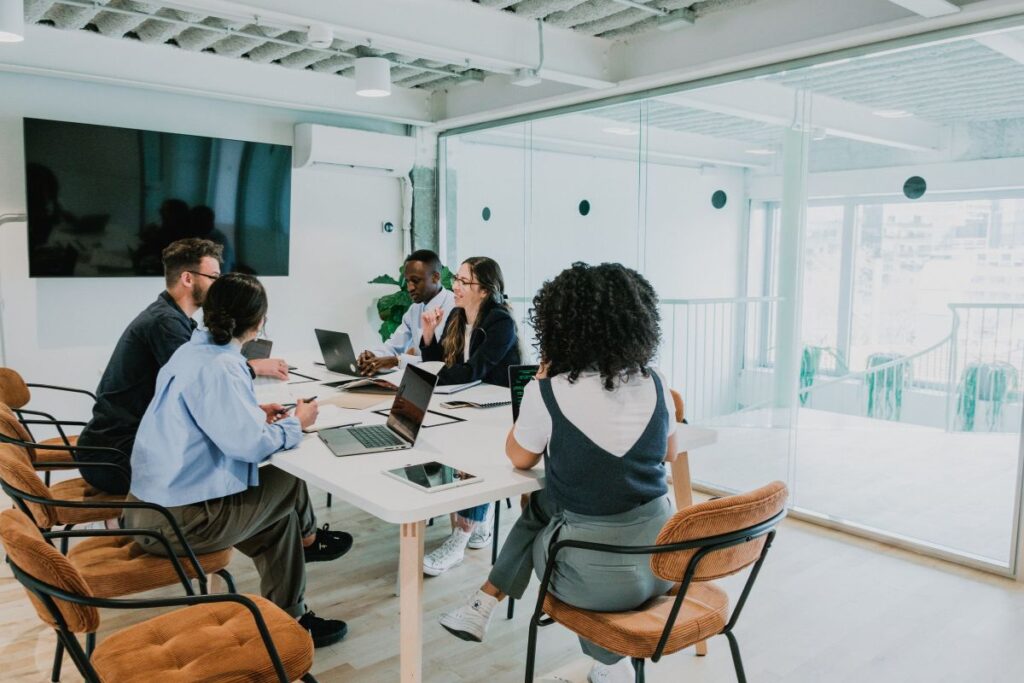
❓ Frequently Asked Questions About Team Building
We get it. “Team building” is one of those phrases that can mean a hundred different things. So let’s clear up a few of the most common questions people ask when planning team-building sessions in today’s workplace.
🥳 What are the fun activities for team building?
The best team building activities are the ones your team actually wants to do. “Fun” doesn’t always mean loud or silly – it can mean engaging, surprising, or even reflective.
What makes an activity enjoyable isn’t the format, but the feeling it creates:
- A sense of play or curiosity
- Genuine connection between colleagues
- A break from the routine that feels meaningful
Whether it’s a creative pitch session, a collaborative challenge, or a casual storytelling game, the most fun team building is the kind that leaves people saying, “I didn’t expect to enjoy that but I really did.”
🔢 What are the 4 main types of team building activities?
While there are endless formats, most team building activities fall into these four core types:
- Relational – Designed to help people connect on a personal level (e.g. “What do we have in common?” or compliment circles)
- Collaborative – Focused on teamwork and problem-solving (e.g. escape rooms, scavenger hunts)
- Creative – Encouraging imagination and out-of-the-box thinking (e.g. pitch challenges, themed debates)
- Reflective – Space for self-awareness, appreciation, or shared insights (e.g. memory wall, peer recognition)
The most effective team building strategy includes a mix of all four.
🧠 What are the 7 C’s of team building?
The 7 C’s offer a helpful framework for what strong team building should aim to cultivate:
- Communication – Clear, honest, effective dialogue
- Collaboration – Working well together towards shared goals
- Commitment – Mutual accountability and ownership
- Competence – Skills and strengths that complement one another
- Confidence – Trust in self and teammates
- Creativity – Encouraging innovation and diverse thinking
- Cohesion – A sense of unity and belonging
If your team building sessions are designed with these in mind, they’re more likely to have a real impact.
⚡ What is a 5-minute team energiser?
A 5-minute team energiser is a short, focused activity designed to quickly reset energy levels, perfect for kicking off a meeting or breaking up a long session.
The key isn’t just speed, it’s intention.
A great energiser:
- Involves light interaction (but no pressure)
- Sparks movement, laughter, or quick thinking
- Helps people shift gears and re-engage with the group
Some examples include quick-fire “this or that” questions, a lightning scavenger hunt, or “show and tell” with the best thing on your desk.
Even a well-timed stretch or shared music moment can do the trick as long as it’s simple, inclusive, and energising.
Build Teams People Want to Be Part Of
In a world where remote fatigue is real, hybrid schedules are the norm, and meaningful connection often slips through the cracks, team building is the glue that holds culture together.
But it only works when it’s intentional.
Not every activity has to be high energy or ground-breaking. What matters is that it’s designed with your people in mind, their personalities, their challenges, their working reality. Team building should feel relevant, respectful, and genuinely enjoyable. Done well, it doesn’t just make teams work better, it makes them feel better.
We help companies bring those moments to life with meaningful, tangible experiences that stick. From welcome kits that turn onboarding into something memorable, to thoughtful gifts that add depth to virtual events we’re here to help you build culture, not just boxes.
Because the strongest teams aren’t built in all-hands meetings.
They’re built in moments of shared experience, genuine appreciation, and human connection.
👇Want to Make Team Building Moments Actually Stick?👇
Go Beyond Activities
Learn how to pair team-building moments with physical touchpoints that reinforce belonging and boost morale.
Make Recognition Personal
Discover simple, scalable ways to show your team they’re seen, valued, and part of something meaningful.
Give With Impact
Every gift includes a meal donation to someone in need because appreciation should give back, too.
